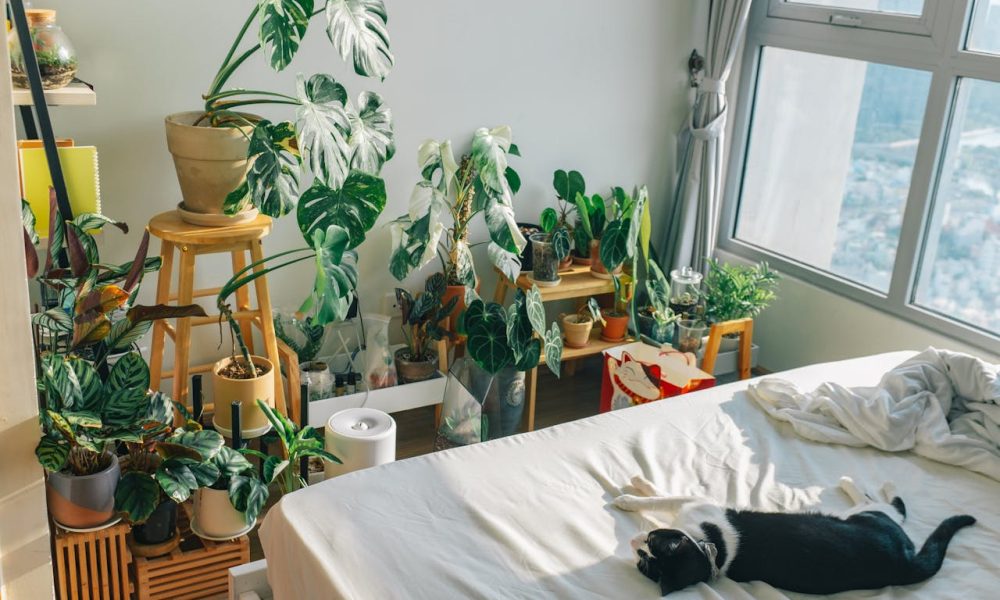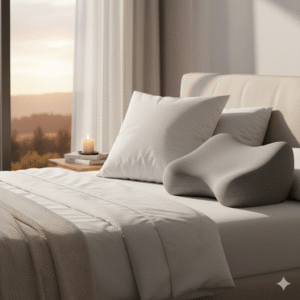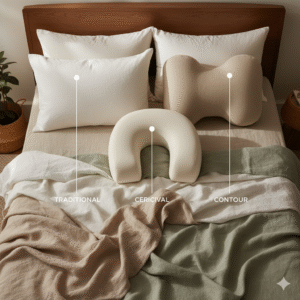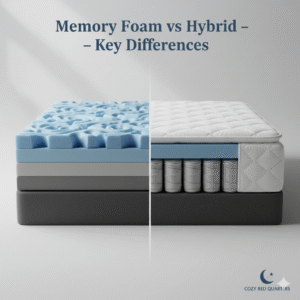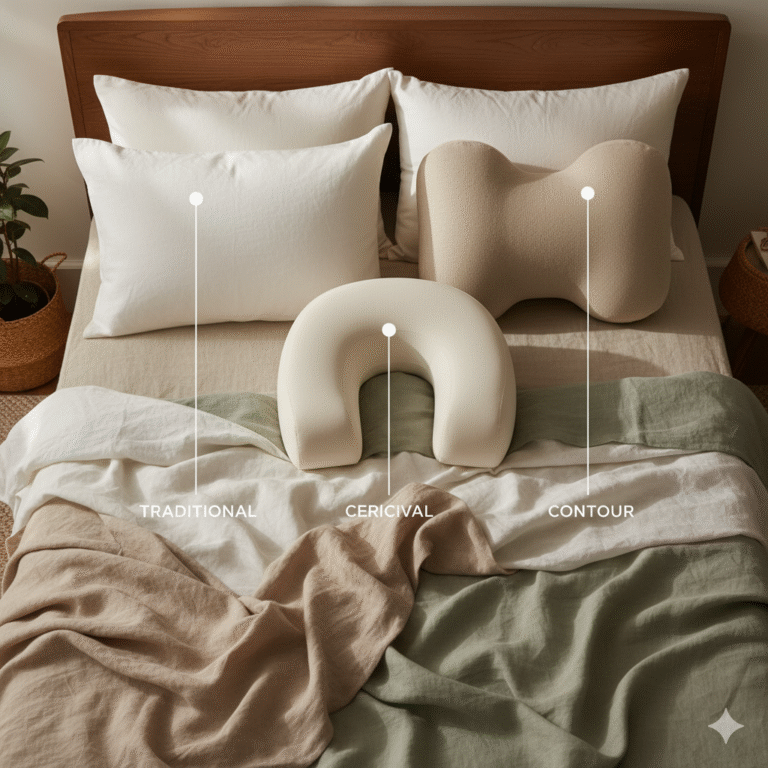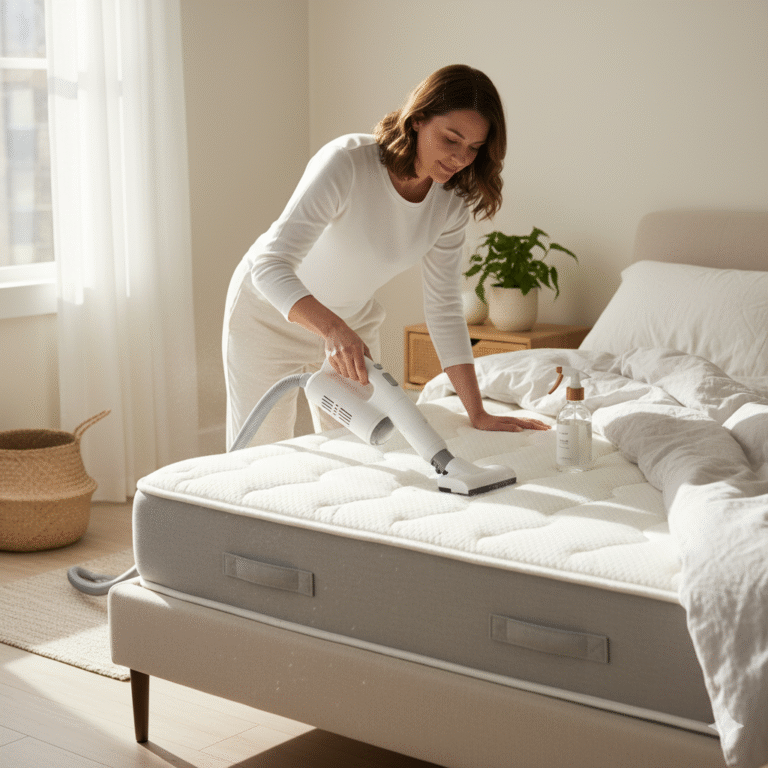Biophilic Bedroom Design
Biophilic bedroom design brings nature indoors, helping you sleep deeper, feel calmer, and turn your space into a rejuvenating sanctuary. This biophilic bedroom design approach is a proven path to natural sleep wellness.
Key Takeaways: Biophilic Bedroom Design
- Biophilic bedroom design reduces stress and enhances rest by weaving natural light, plants, and organic textures into your sleep space.
- Small shifts—like adding breathable linen sheets or a night-blooming plant—help shape a nature-connected retreat.
- Elements like greenery, daylight rhythms, and natural materials support clearer mind, cleaner air, and balanced circadian cues.
What Is Biophilic Bedroom Design?
Answer first: Biophilic bedroom design reconnects your sleep environment with nature through light, plants, textures, and organic materials to create a calming, restorative sanctuary.
It’s more than aesthetics—nature-inspired spaces can lower stress, support mental well-being, and encourage deeper rest. By weaving outdoor references into your room, you invite the calmness of nature into your nightly routine. For a research-backed environment checklist, see the Sleep Foundation’s bedroom environment guide.

How Biophilic Bedroom Design Supports Better Sleep
Answer first: Natural materials, greenery, and gentle light cues calm the nervous system, promote steady breathing, and reinforce circadian rhythms for deeper sleep.
- Stress Reduction: Wood, stone, and plants provide relaxing visual cues.
- Air Quality: Select indoor plants can help reduce VOCs and refresh indoor air.
- Circadian Support: Bright mornings and dimmer evenings help keep melatonin on schedule.
- Sensory Calm: Natural fabrics, organic patterns, and tactile surfaces signal safety and rest.

Start with Light & Air: The Biophilic Foundation
Answer first: Prioritize daylight and fresh airflow before adding decor—these two shifts deliver the biggest biophilic impact.
Let in the Sunshine
- Replace heavy drapes with sheer or linen curtains that filter light.
- Angle your bed toward windows to capture soft morning light.
- Use warm-toned bulbs (≈1700–2700K) in the evening to mimic sunset and wind down.
Invite Fresh Air
- Open windows periodically to dilute indoor pollutants.
- Consider hardy, air-supportive plants like snake plant or peace lily.
- In tightly sealed homes, explore a heat-recovery ventilator (HRV).
For material sourcing that aligns with nature-first choices, browse Parachute Home’s organic bedding guide.
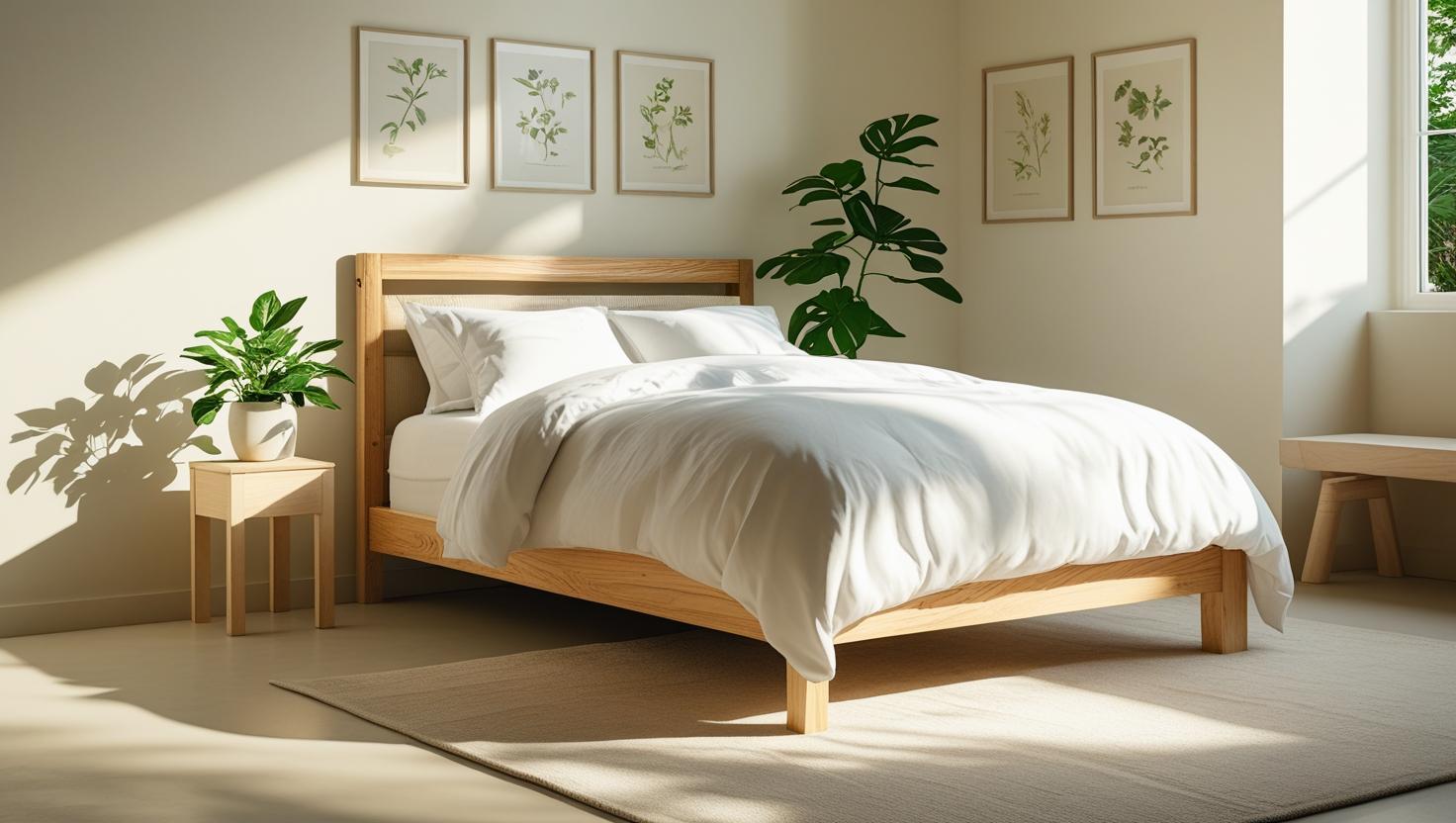
Bring the Outdoors In: Plants & Living Elements
Answer first: Two to four bedroom-friendly plants can transform mood and air freshness without overwhelming the space.
Best Plants for Bedrooms
- Snake Plant: Low maintenance; helps filter indoor air.
- Lavender: Calming aroma with sleep-friendly associations.
- Peace Lily: Thrives in moderate light; helps reduce certain pollutants.
- English Ivy: May help reduce airborne mold and allergens.
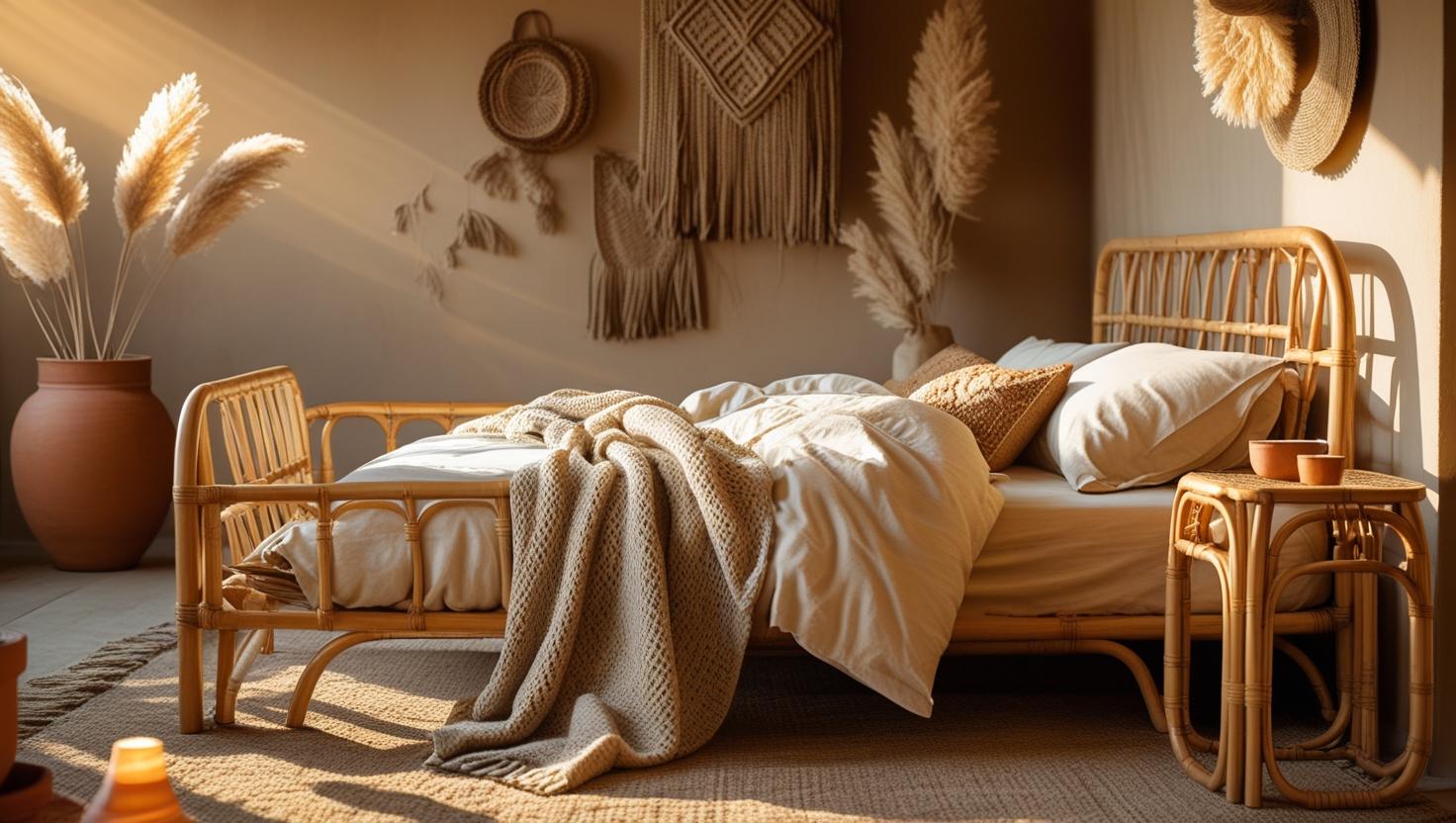
Materials & Textures That Ground You
Answer first: Choose breathable textiles and tactile, natural finishes—your skin and senses will relax on contact.
- 100% linen or cotton bedding: Breathable and soft—look for certified options.
- Jute, sisal, or wool rugs: Cushion underfoot and add organic texture.
- Rattan, cane, reclaimed wood furniture: Visible grain and curves add warmth.
- Ceramic, clay, pottery: Earthy accents with artisan character.
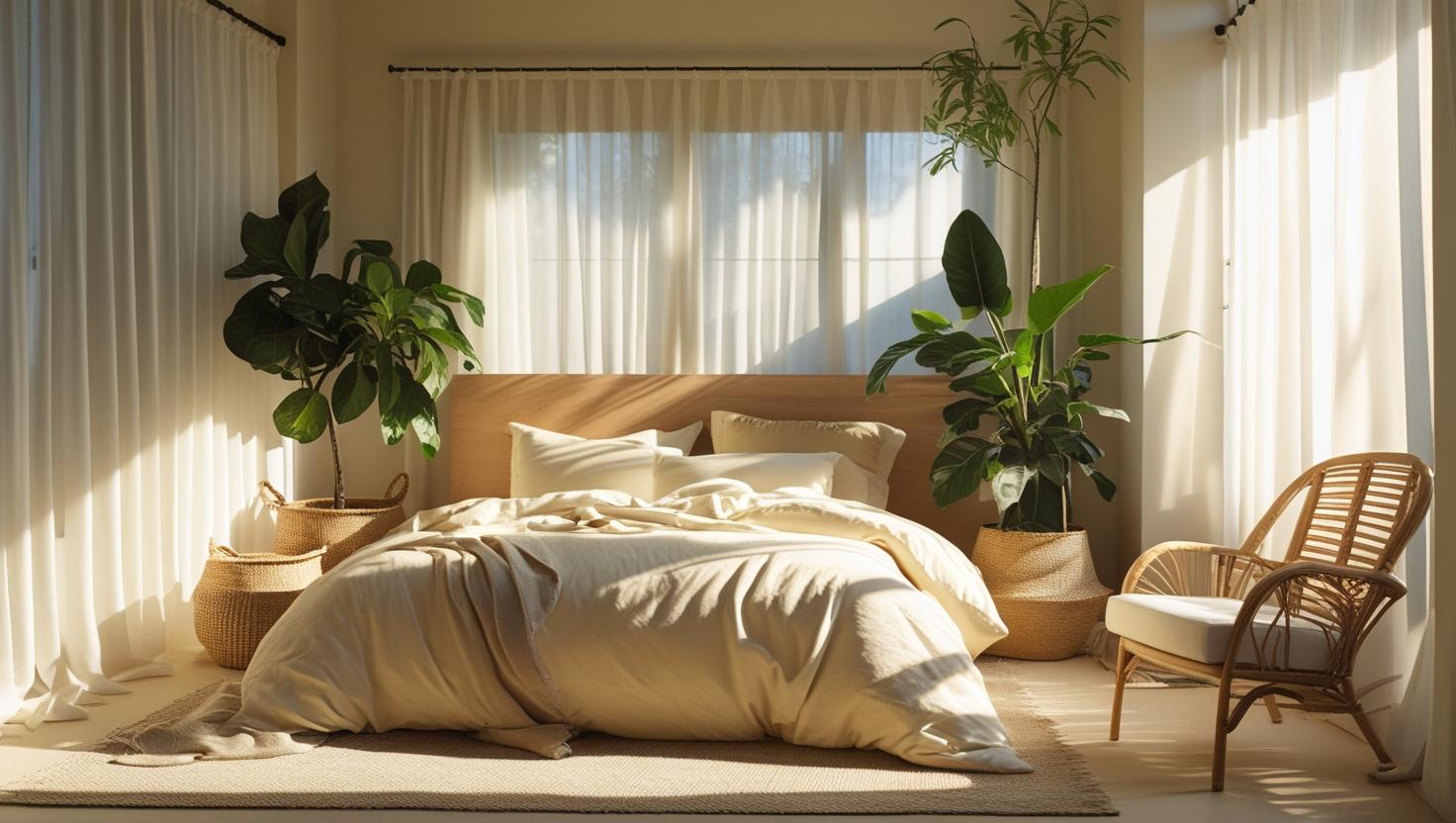
Minimalism Meets Biophilia: Keep the Calm
Answer first: Declutter so natural elements can shine—fewer, better pieces amplify the soothing effect.
Use hidden storage, maintain open sightlines, and restrain your palette so plants and textures serve as focal points.
Beyond Basics: Advanced Biophilic Touches
Answer first: Add subtle sensory layers—water, art, sound, and scent—to deepen the nature connection.
- Water Feature: A compact fountain or cool-mist humidifier adds gentle ambience.
- Nature-Inspired Art: Botanical prints, forest photography, or abstract landscapes.
- Soundscapes: Rain, forest, or wind noise can help mask distractions.
- Aromatherapy: Eucalyptus, cedarwood, or sandalwood can evoke the outdoors.
Eco-Friendly Design Meets Sleep Wellness
Answer first: Opt for verified materials and passive design choices to reduce exposure to chemicals and support sustainable comfort.
- Certified organic textiles (GOTS): Choose organic bedding and eco-conscious sheets.
- FSC-certified or reclaimed wood: Lower impact, long-lasting character.
- Low-VOC paints and finishes: Fresher indoor air while things off-gas.
- Passive strategies: Ventilation, daylighting, and shading reduce energy use.
- Efficient envelope: Insulation and glazing to manage temperature swings.
FAQ
- What is biophilic bedroom design?
- It’s a design philosophy that integrates nature—light, plants, textures, and forms—to shape a calming, restorative sleep space.
- Which plants are safe for bedrooms?
- Snake plants, peace lilies, lavender, and English ivy are popular options known for low maintenance and indoor friendliness.
- Does natural light really improve sleep?
- Yes. Exposure to morning daylight supports circadian rhythms, which aids melatonin timing and overall sleep quality.
Final Thoughts & Cozy Bed Quarters Note
Biophilic bedroom design offers a pathway to a more restful, grounded, and nature-connected life. Even small steps—like choosing eco-conscious sheets, adding a potted peace lily, or embracing soft morning light—help your space breathe with nature. At Cozy Bed Quarters, we believe biophilic bedroom design blends sustainable bedding and restorative sleep into one sanctuary. Dive deeper into our Ultimate Sleep Guide or explore our practical tips in Serene Bedroom Sanctuary.

